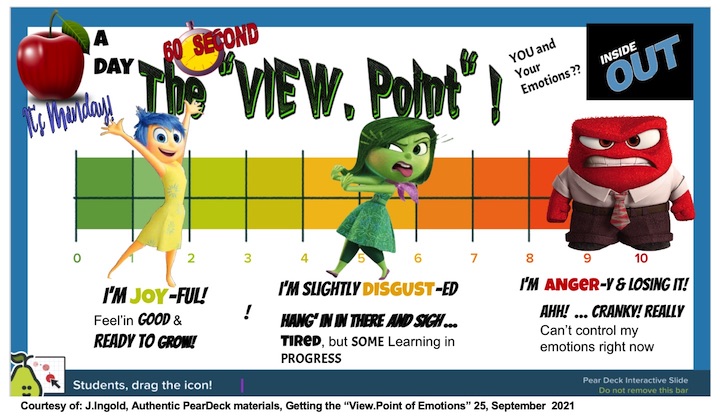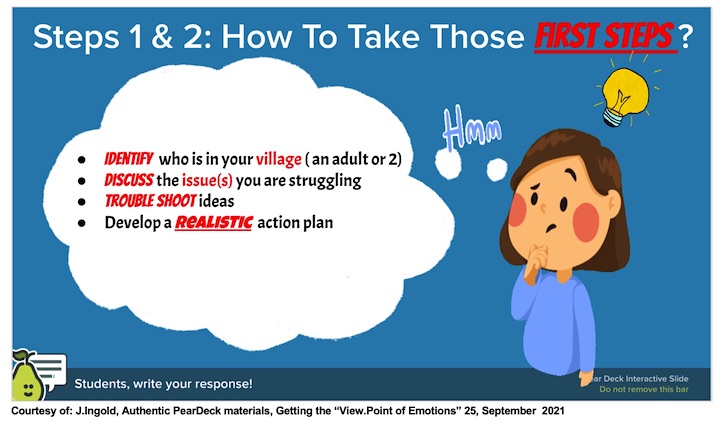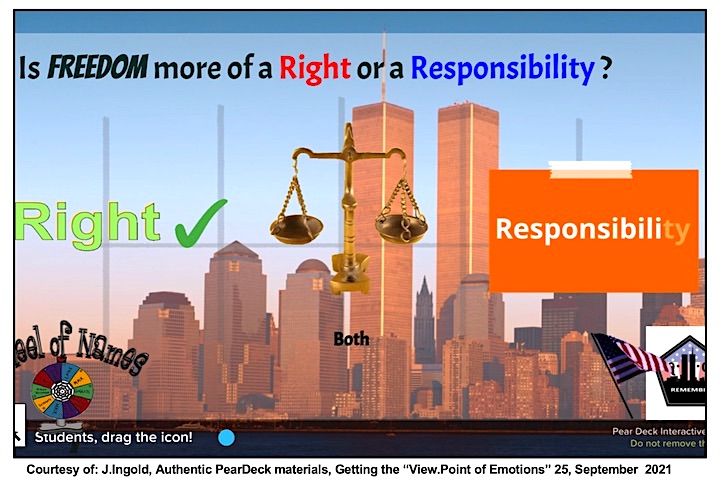Teaching Life Lessons: Finding Our ‘View.Point’
 By Jennifer Ingold
By Jennifer Ingold
“Sometimes, life chooses you!” I told my social studies students after they watched the trailer for 15:17 to Paris, an amazing true story of friendship, courage, bravery and the power of choice.
Three friends (whose journey together started years before as middle school misfits!) discovered just how much life’s greatest moments are defined by what is found inside of us, when we need it the most.
Theirs is the story of a successfully thwarted 2015 terrorist attack on a train heading for Paris with 500 passengers.
“What will you do when your time comes?” I asked my eighth graders.
Getting to Your “View.Point”
When my students studied the history of 9/11 and heard all the heroic stories of ordinary people like themselves doing extraordinary things, they looked bewildered. For most, their biggest takeaway was that anyone could be a modern hero. For others, it was the power found in the simplicity of a single choice.
Some students grasped that our ability to choose is not only a gift, but also comes with great responsibility. Many felt uncomfortable, wondering if they would truly be ready when life came looking for them in the midst of crisis. And “what are we to do in the meantime?” is a question that challenges even the most intelligent adults but is especially challenging for adolescents.
Getting in touch with emotions, especially as a middle schooler, has become a critical component to classroom success. It is also an essential life skill. Teachers need to be involved in the process of helping all students to better identify with how they are feeling and understand emotion’s important relationship to success.
Modeling how to accomplish this level of awareness and embedding this social-emotional learning into our everyday classroom practice can be challenging. I think of it this way: Helping students to identify what I describe to them as their View.Point requires a systematic and holistic approach that’s “Inside and Out.”
I created the “Apple A Day” activity incorporating characters from Disney’s Inside Out. This 5 to 7 minute SEL exercise has helped me to better train my students how to connect with their emotions.
Using PearDeck as a platform, students are regularly introduced to questions ranging from “How are you doing?” to “How are you feeling about your relationship with your homework?” as well-being check-ins at the beginning of each class period. The PearDeck polling feature allows me to then share anonymous student responses with my class in real time.
The anonymity encourages full student participation, while allowing all to see that they, perhaps, are not the only one struggling with any particular issue on any given day. This lowers student intimidation, encourages clarifying questions, and increases their active involvement in their own education.
These polls serve as the springboard for healthy class discussions on just how to approach managing difficult situations and their accompanying emotions – both in and out of the classroom – by providing simple, relatable solutions.
Presenting Simple Solutions
How amazing it has been for my new 8th grade students to see how easily they can be a part of the process! So much more than a school lesson, learning how to properly manage their emotions is an important first step in life.
The possibilities are endless when everyone is given the opportunity to get their school year off to the right start with these easy 4-step sets of simple solutions. The daily conversation begins with exactly where students are and ends with practicing healthy habits for life, a plan that has the potential to carry them through any of life’s difficult situations.
Most important, students who believe in this process give themselves greater opportunities for success in learning and in life. But students do need to ”buy in” in order to be fully vested.
The Power of Positive Thinking
Being in touch with their emotions allows all students to be more comfortable and confident decision makers. “Freedom is BOTH a Right and a Responsibility,“ my students concluded after our 20th Anniversary Commemoration of 9/11.
Being in touch with their own emotions not only allowed them to be more open and confident critical thinkers, but also allowed them to better identify with and empathize with the stories shared during our 9/11 commemoration.
When used properly, these skills have the capability of also creating better, more efficient and effective time managers. This also makes for students who not only feel more capable of smoothly connecting with content presented in classrooms, but also translating and applying it to the real world around them.
Students who are “in touch” now feel capable of dealing with whatever challenges life decides to throw their way. And, not only is that just good for a middle schooler – it’s good for everyone!
Jennifer Ingold (@msjingold) was chosen as both the NCSS and NYSCSS Middle School Teacher of the Year in 2019 and has received the Cohen-Jordan Secondary Social Studies Teacher of the Year Award from the Middle States Council for the Social Studies.
Jennifer currently teaches eighth grade social studies at Bay Shore Middle School in Bay Shore, New York. She has been a speaker at local, state, regional and national conferences, is a lead blogger for C3Teachers.org, and has had her work featured in major publications such as Social Education, Middle Level Learning, and AMLE Magazine. And, of course, MiddleWeb.








































What a wonderful format for children to use, to allow their opinions to be heard.